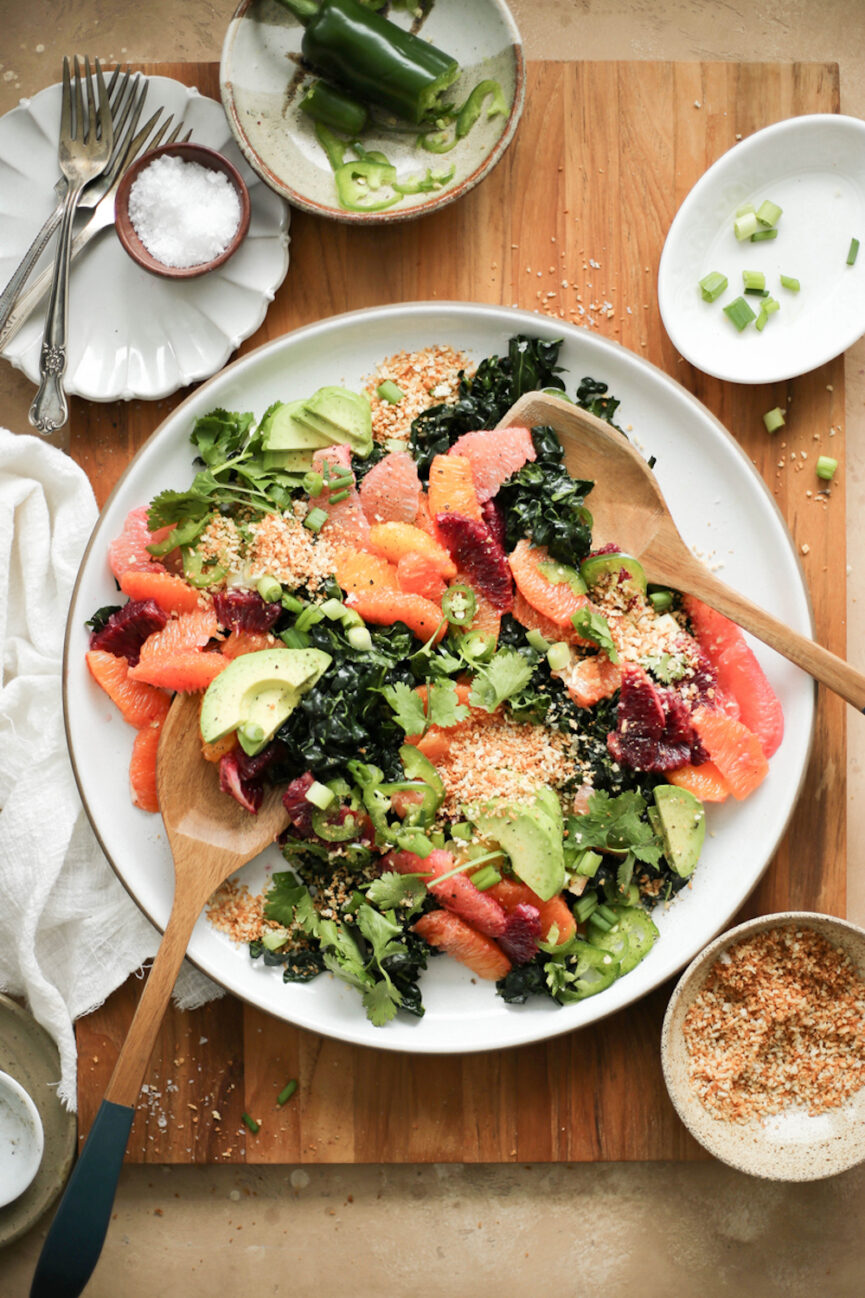Welcome to your one-stop shop for all things hormone health. Today, we’re delving into the first half of the menstrual cycle: your follicular phase. Spoiler alert—you’ll want to take note. Whether you’re well-versed in female hormones or you’re entirely disconnected from your cycle, there’s a seat for every menstruator at the table. So, pull up a chair. It’s time to segue into all things fertility, renewal, and lifestyle strategies to optimize your follicular phase. Let’s begin.
Featured image of our interview with Sanetra Nere Longno.
Edie Horstman
Edie is the founder of nutrition coaching business, Wellness with Edie. With her background and expertise, she specializes in women’s health, including fertility, hormone balance, and postpartum wellness.
A Menstrual Cycle Overview
For context, the menstrual cycle is a complex, delicate process. It’s orchestrated by the female reproductive system, designed to prepare the body for potential pregnancy (even if that’s not on your radar!). Its primary purpose is to regulate hormone levels, facilitate the release of an egg during ovulation, and shed the uterine lining—if conception doesn’t occur. Each cycle typically lasts around 28 days, but variations are common.
First half: Follicular phase
The follicular phase begins on the first day of menstruation and lasts until ovulation (about 14-18 days). During this phase, follicles grow in the ovaries, each containing an egg. As these follicles mature, they produce estrogen. This thickens the uterine lining—in preparation for a potential pregnancy.
Second half: Luteal phase
The luteal phase follows ovulation and lasts until the start of your next menstrual period. After ovulation, progesterone rises. If pregnancy is in the cards, this hormone plays a crucial role in creating an environment for a fertilized egg.

Is your follicular phase normal?
In essence, a normal follicular phase is unique to every female. We’re bio-individuals, after all! That said—as a whole—knowing if your follicular phase is standard involves understanding a few things: its duration, hormonal patterns, and symptoms. Below are a few indicators to keep in mind.
Cycle length
As mentioned, the follicular phase averages around 14 days. Significant deviations from this norm could signal hormonal issues.
Hormonal balance
Speaking of hormones, it’s helpful to monitor follicle-stimulating hormone (FSH) levels throughout your follicular phase. FSH acts as a precursor to the second half of your cycle, encouraging an egg to release during ovulation. Ultimately, keeping tabs on FSH (through a blood test) can provide insights into overall hormone balance.
Ovulation signs
Tracking ovulation symptoms—changes in cervical mucus and basal body temp—help pinpoint the transition from the follicular phase to ovulation. And consistent ovulation is indicative of a healthy follicular phase.
Menstrual symptoms
While some discomfort (i.e., mild cramping or breast tenderness) may accompany the follicular phase, excessive pain or abnormal bleeding warrants investigation.

5 Tips to Support a Healthy Follicular Phase
Fortunately, optimizing your follicular phase isn’t rocket science. Embracing the following holistic approaches can enhance your overall well-being and—simultaneously—your reproductive health.
- Prioritize stress management. To no surprise, high stress levels disrupt hormonal balance, impacting the follicular phase. Incorporate stress-reducing practices like mindfulness, yoga, or deep breathing exercises into your daily routine.
- Hone in on sleep hygiene. Quality sleep is paramount for hormonal regulation. Aim for 7-9 hours of uninterrupted sleep each night. Establish a consistent sleep schedule and create a conducive sleep environment.
- Nourish your body. During the follicular phase, focus on nutrient-dense foods like leafy greens, berries, salmon, flaxseeds, and avocados. These foods promote ovulation and provide essential nutrients for reproductive health.
- Engage in regular exercise. Moderate physical activity enhances blood circulation, promotes hormonal balance, and reduces stress. All things we love! Find activities you enjoy, such as resistance training or dancing. Try to move your body every day—yes, stretching, a 20-minute walk, and mobility exercises count.
- Explore mind-body practices. Everything from acupuncture to aromatherapy supports a healthy follicular phase. One follicular phase ritual to consider: brew a cup of raspberry leaf tea and indulge in a meditation session that focuses on visualizing growth and renewal.

Follicular Phase Nutrition
Wondering what you should eat during your follicular phase? Look no further. As a reminder, your dietary choices can make or break your hormone health. Said differently: what you put on your plate matters.
Embrace phytonutrients. Consume a colorful array of fruits and vegetables rich in phytonutrients, such as beta-carotene (carrots), lutein (kale), and quercetin (citrus). These compounds possess antioxidant properties, supporting ovarian function and hormone balance.
Prioritize healthy fats. Incorporate omega-3 fatty acids as often as possible. Our faves? Fatty fish, chia seeds, and walnuts. These fats modulate inflammation and encourage healthy FSH levels.
Include lean proteins. Opt for lean protein sources, like poultry, fish, tofu, and legumes. These provide amino acids necessary for hormone synthesis and cellular repair.
Mind your micronutrients. Don’t forget your vitamin D, B vitamins, magnesium, and zinc. All of these play pivotal roles in reproductive health and hormone regulation.

Foods to Eat During the First Half of Your Cycle
To nourish your hardworking hormones, consider prioritizing these foods—specifically—during your follicular phase:
- Leafy greens. Load up on spinach, kale, Swiss chard, and collard greens. These are rich in folate, iron, and vitamin C, nourishing blood health as your period ends.
- Berries. Blueberries, strawberries, raspberries, and blackberries are packed with antioxidants, vitamins, and fiber—all things your hormones appreciate! Plus, these are all blood sugar-friendly fruits.
- Wild-caught salmon. Rich in omega-3 fatty acids and vitamin D, salmon helps decrease inflammation and regulates hormone synthesis. This is crucial during the follicular phase.
- Flaxseeds. High in lignans and omega-3 fatty acids, flaxseeds help balance estrogen levels.
- Avocado. A source of healthy fats, vitamin E, and potassium, avocado encourages hormone production. Here’s your gentle nudge to try our avocado toast with pesto.
- Legumes. Lentils, chickpeas, and beans provide protein, fiber, and essential minerals like iron and zinc. Legumes are also protein-packed to help with blood sugar balance and satiation.
- Quinoa. Speaking of protein, quinoa is a complete protein source, containing fiber, magnesium, and B vitamins. Hello, hormone balance and stable energy.
- Eggs. Rich in protein, vitamin D, and choline, eggs are fantastic for hormone synthesis and overall reproductive health. When possible, choose organic or pasture-raised eggs.
- Nuts and seeds. Almonds, walnuts, pumpkin seeds, and sunflower seeds are rich in healthy fats and a variety of minerals—they’re tiny but mighty hormone helpers.
- Greek yogurt. High in protein and probiotics, Greek yogurt promotes gut health and hormone metabolism during the follicular phase.
- Broccoli and cauliflower. Cruciferous veggies—like broccoli and cauliflower—help metabolize excess estrogen.
- Oranges. Citrus, in general, is ideal during the first half of your cycle. Not only do oranges and lemons boost immune function, but they encourage hormone synthesis, too.
- Tofu and tempeh. Research shows that plant-based sources of phytoestrogens (like tofu and tempeh) can support hormone balance and reproductive health.
- Dark chocolate. Getting enough magnesium is always important, but especially during the follicular phase. And good news: Dark chocolate fits the bill. In turn, it supports hormone regulation and helps alleviate symptoms like bloating and mood swings.

Strength Training: The Best Workout During Your Follicular Phase
With follicular phase nutrition under your belt, let’s move on to fitness. Ultimately, aligning your workouts with your hormones is key for achieving physique goals. For example, while you may be drawn to cozy cardio, the first half of your cycle is ideal for strength training. Of course, that doesn’t mean you can’t resistance train during other weeks of your cycle! But if you want to see results, grab heavier dumbbells during your follicular phase. Several studies indicate that strength training during this phase resulted in higher increases in muscle strength compared to the luteal phase.

Making the Most of Your Follicular Phase
To bring this to a close, may your follicular phase usher in renewal, vitality, and growth. It’s an opportunity to lean into increased energy and creativity. Socialize with friends, start a new project, and be intimate with your partner (or take extra precautions in the bedroom!). At any rate, use the first half of your cycle to foster a beautiful connection with your body and its innate wisdom.
